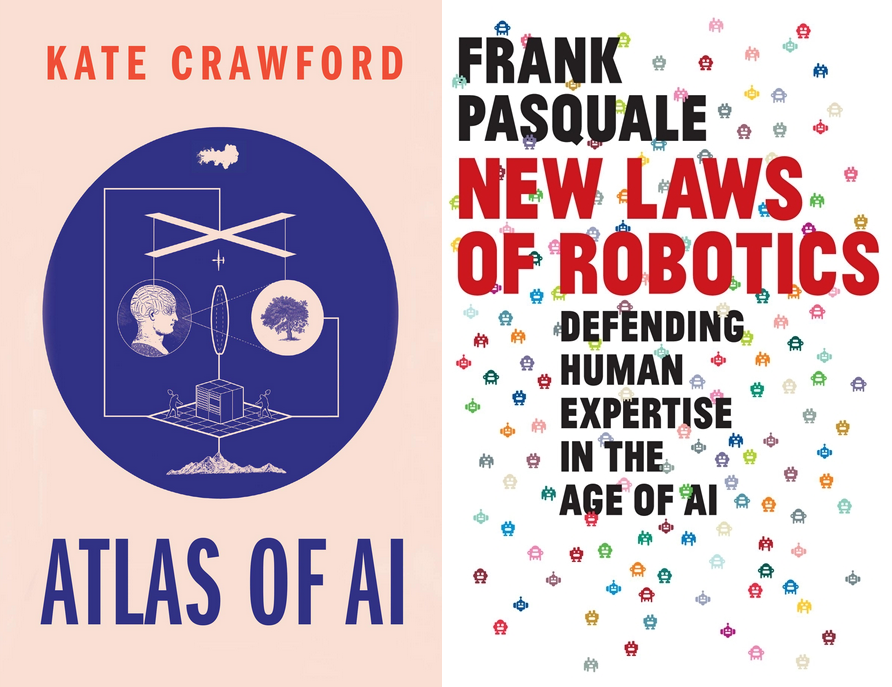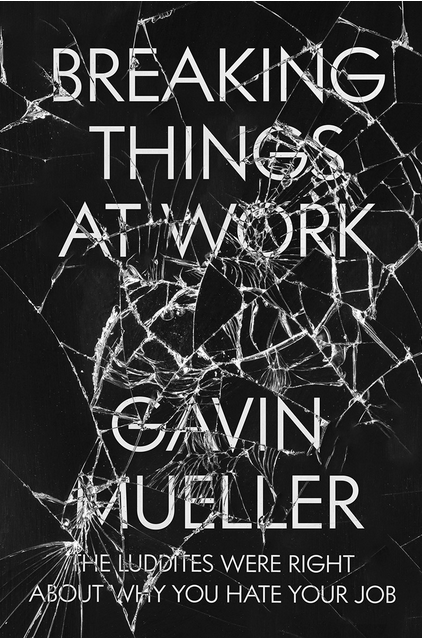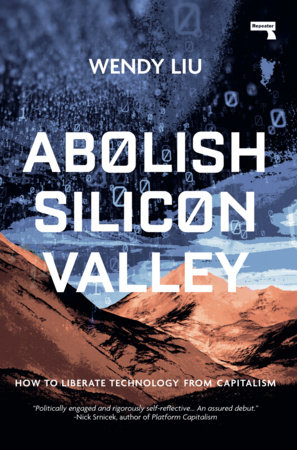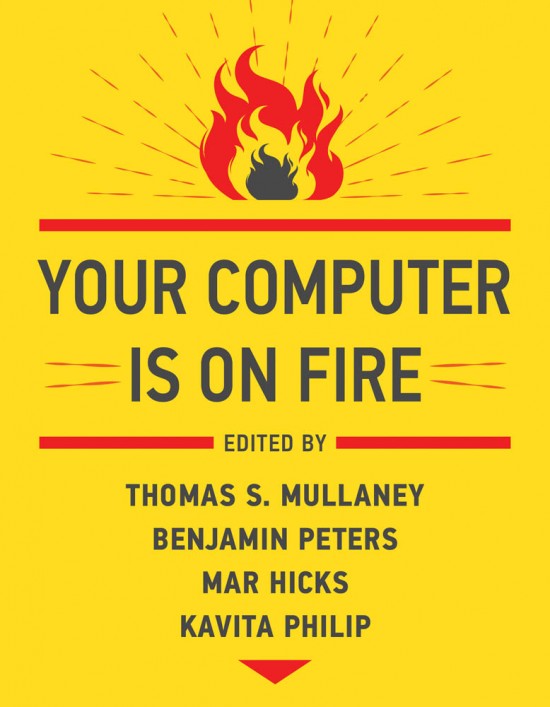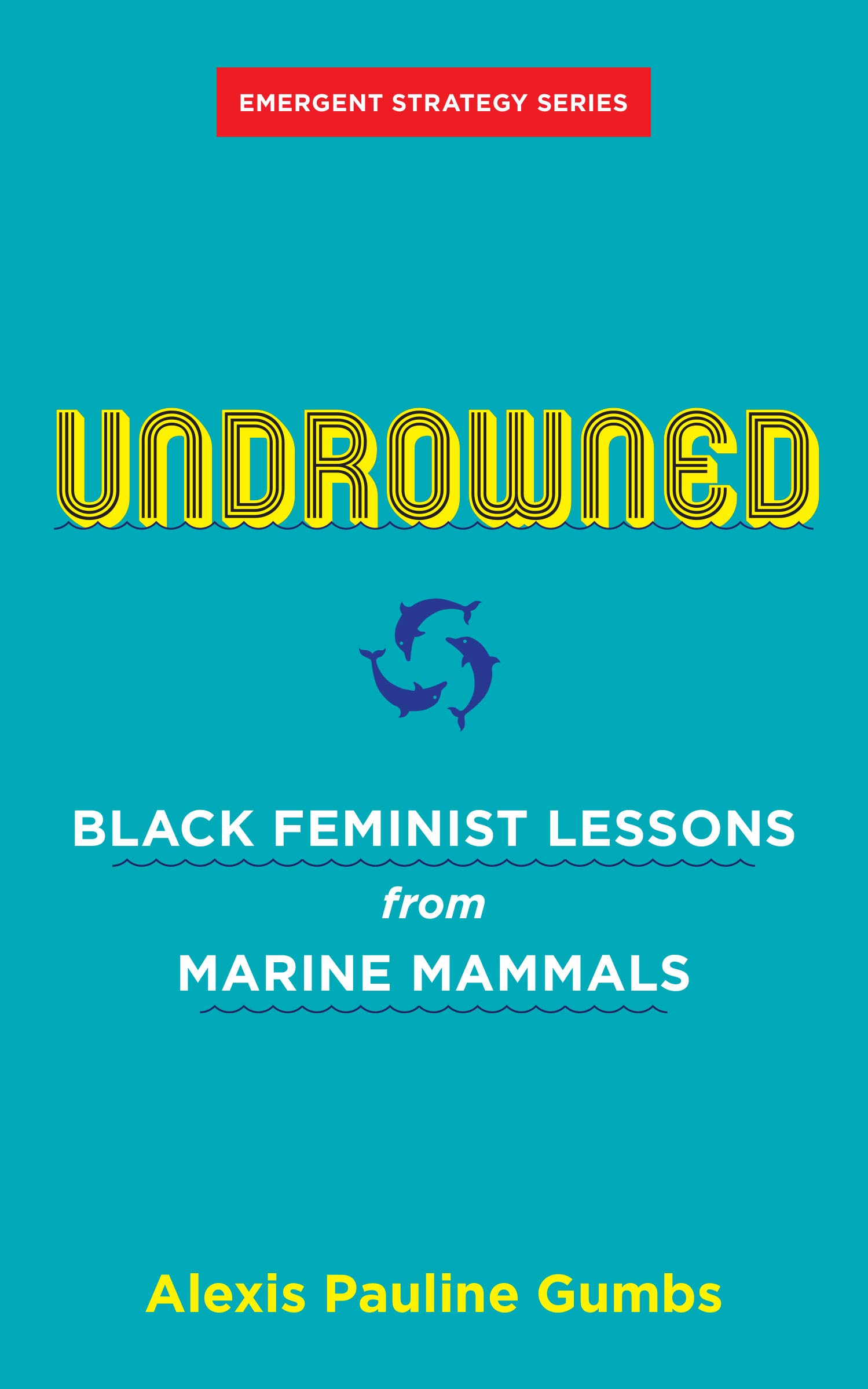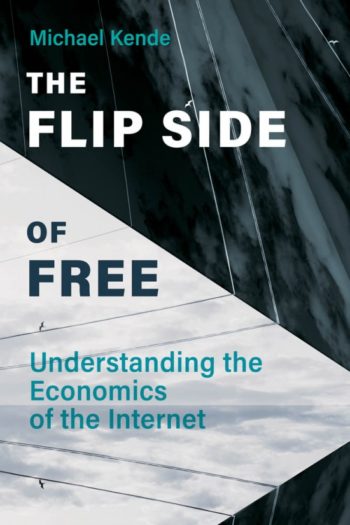This review has been peer-reviewed by the b2o editorial board.
by Anton Jäger and Jan Overwijk
On December 5th, 2019, London’s Conway Hall hosted an illustrious reunion. Michael Hardt and Antonio Negri – authors of the 2000 classic Empire, itinerant celebrities of the academic left – came to London to revisit their theses in a “world of Trump” (Hardt and Negri 2019a). “Twenty years on”, the announcement read, “globalization remains a central issue of our era, but commentators are conducting its postmortem, as forces across the political spectrum herald the return of national sovereignty” (Hardt and Negri 2019a). A lot had indeed changed in twenty years, the authors admitted. Across the world, evangelists of globalization found themselves in a state of retreat, embattled by Brexiteers, Orbánists, and other antiglobalists, led forth by the likes of Bolsonaro, Trump, and Duterte (Eichengreen 2018; Norris and Inglehart 2016). With supposed “populists” heading states from Budapest to Delhi, raising tariff barriers and restricting labor mobility, had Empire stood the test of time?
There was a time when Empire occupied the center of global political theory. “Even if it doesn’t deliver the goods,” a reviewer charged in 2001, “Empire should inspire a multitude of empirical investigations and practical political projects” (Henwood 2001, 12). Others were less enthused: a member of the American LaRouchist movement described Negri as a “terrorist controller” who became “a leading ideologue of the new decasualization” (Celano 2001, 16). Despite such early pushback, the phrases deployed in Hardt and Negri’s book still occupy a stable place in the left’s vocabulary” – “multitude”, “cognitive capital”, “deterritorialization”, “post-Fordism” – and have found their way into scholarly language (Kioupkiolis 2016, 138-139). Interestingly, Hardt and Negri’s theory also seems to have been granted a paradoxical new lease on life after the failure of left populism in the 2010s. After ten years of experimenting with parties, institutions, elections, and representation the left finds itself sent back to a position resembling early 2000s horizontalism, but without facing a triumphantly cohesive neoliberal bloc.
No thinkers provided a more trenchant diagnosis of this previous period than Hardt and Negri. Yet no thinkers also more clearly exemplified the limits of the previous horizontalist critique of the Washington Consensus than the authors of Empire – limits to which the left populist moment was all too attentive in its focus on party building and associative activity. The dogged return of the Hardt-Negri thesis thus speaks to a deeper contradiction in their oeuvre. While few theorists offered a more powerful theory of the new gods of fin de siècle capitalism – both economic and political – they had far less to say about the ‘old gods’ that stalked the neoliberal world, from the spread of general market dependence, the retrenchment of mid-century social rights, to the declining bargaining power of labor. On a surface level the hypothesis of Empire was so plausible as to be unassailable – the spreading of flexibility and creativity through the entirety of the capitalist labor market, and the digital ideologies this spawned. Hardt and Negri also offered a potent vision of the new modes of anti-representative politics that flourished on this new economic terrain, and how capital reconstituted both itself and the labor process. On a deeper level, Empire equally leaned into the most implausible of all hypotheses: that the fight for an old-style political economy and decommodification had to be abandoned for Marxism to remain viable, that old dogmas were only just that: dogmas, and that regression could be recast as progression.
As the world returns to the squares and the “multitude” resurfaces, this article revisits the project begun with Empire. Although cognizant of the advancements and insights offered by Empire and the broader, anti-institutional mood it was part of, it claims that Hardt and Negri’s theory of the multitude, indexed to a specific understanding of capitalist logics and a Spinozist ontology, still retains a fatal ambiguity. That ambiguity deserves revisiting today, in a time when the left populism first proposed by Ernesto Laclau and Chantal Mouffe and later enacted by Podemos, La France Insoumise, and Syriza has waned and Hardt and Negri’s movementism is undergoing a revival.[1] While the 2010s swore by theorists such as Laclau and Mouffe’s “organizational” tendencies, the 2020s open a chapter continuous with Hardt and Negri’s horizon (Cunliffe 2020, 122). This article thus cautions both politically and theoretically against a hasty return to Hardt and Negri’s trilogy of four after the close of the populist decade, and urges us to move beyond it while maintaining some of its key insights. In this sense, it calls neither for uncritical acceptance nor unconditional rejection. We argue that even today still, much of value can be found in Hardt and Negri’s oeuvre, even if that value is often too one-dimensional.
- Metaphysics of Indistinction
Any reckoning with Hardt and Negri’s legacy must move from the abstract to the concrete, peering at the foundations propping up the political theory: their ontology. From Empire (2000) to Commonwealth (2018), both authors understood the transition from the Fordist phase of capitalism to its post-Fordist phase primarily as one of a “multitude” coming into its own. But Hardt and Negri take this faith in the productive capacities of the global working class far beyond Mario Tronti’s (2019) original, post-operaist “reversal of perspective” (Shukaitis 2015, 3). In the 1960s, Tronti sought to correct classical Marxism’s overly strong emphasis on the autonomous development of the productive forces as the principal determinant of historical progress (Balestrini 2020). Instead of envisioning history as a chain of events in which a reactive working class pre-empts capital’s maneuvers, Tronti’s operaismo understands labor as the prime historic agent, to which capital is forced to ceaselessly respond. Post-Fordism, on this count, is not so much driven by new business opportunities for capital as by a need for capital to contain the struggle of organized labor through a new regulation regime – an endogenous, rather than an exogenous, shock. Like Boltanski and Chiapello (2007) in The New Spirit of Capitalism therefore, Hardt and Negri argue that the post-Fordist mode of regulation must be viewed as capital’s response to the revolts of May 1968. The soixante-huitards, as Paolo Virno (2004, 111) notes, demanded the abolition of wage labor but instead got the abolition of the stable job. That capital is merely a reactive force, then, does not mean that it cannot be historically effective.
This Trontian worldview informs Hardt and Negri’s elegy to the concept of proletarian resistance. “Resistance”, Hardt and Negri write, “is actually prior to power” (2001, 360). What is distinctive about Hardt and Negri’s workerism, however, is that they do not primarily understand the agency of labor as a historical force but as an ontological power. Hence their nominal displacement: instead of “labor” or “the working class”, they speak of “the multitude”, inspired by Spinoza’s original multitudo. In its simplest formula, the multitude represents “the power to act”, an ontological principle of self-organization, a purely immanent source of “creative positivity” (Negri 1999, 79; Hardt and Negri 2009, 179-180; 2001, 61). The multitude forms the sole “constituent power”, the only creative agent that produces both itself as well as its historic antagonists, the “constituted power” that is capital, sovereignty and Empire. Capital is thus not so much a freestanding counterforce to labor but a historical aberration of the multitude itself – a “failure to realize our own power” as Benjamin Noys puts it (Noys 2010, 112; see also Hardt and Negri 2001, 312).
More concretely, the multitude under post-Fordism makes up the collective subject of cooperative immaterial laborers under Empire. “Empire”, meanwhile, is understood as the global social order organized around “biopolitical production”, or the production of living labor and subjectivity (Hardt and Negri 2001, 24). With its post-Fordist mode of regulation, Empire thus forms the attempt of capital to capture the value that the multitude always already produces in its very mode of being and becoming. Empire’s stress on networked, collaborative and flexible production—what Hardt and Negri, following Maurizio Lazzarato (1996) call “immaterial labour”— necessarily mirrors the decentralized, cooperative creativities of the multitude, since capital must always follow labor as the sole source of value. In this sense, the post-Fordist moment can rightly be said to be a further realization of the productive capacities of the multitude, which finds itself in a feedback loop with the common: it produces the common in common through the common (Hardt and Negri 2009, 123, 148; 2017, 98). A principle of pure relationality, the multitude is this very feedback loop. Or to use Hardt and Negri’s Deleuzian language, it is the relation that pre-exists the relata.
The pre-existence of labor as a creative force also drives its primal agency. “[T]he deterritorializing power of the multitude”, Hardt and Negri (2001, 61) contend, “is the productive force that sustains Empire”. The post-Fordist formation of Empire here appears as the historical end result of the ontological pressures of the multitude, forcing capital to battle on the multitude’s home terrain of total immanence. At first glance, this may appear as a problematic proposition. It appears that, in ontologizing Mario Tronti’s sociological reversal of perspective, Hardt and Negri pre-decide historical and empirical questions concerning the development of capitalism in ontological terms. For it is not at all empirically obvious that the labor conditions in post-Fordism are the result of the dynamism of the multitude rather than of a power grab of capital in the face of stagnating accumulation in the capitalist core in the 1960s and 1970s. Moreover, Hardt and Negri explicitly eschew the type of ontology that builds in a metaphysically coercive strain of teleology: “there are no final ends or teleological goals written in history” (Hardt and Negri 2004, 221). Instead, they follow the Marxist principle that theory follows practice (Hardt and Negri 2004, 140). History and ontology therefore appear to be pulling in opposite methodological directions: the one pointing to a timeless tension between “Empire” and the “multitude”, the other situating that tension in a distinct temporal setting with history as its facade.
Hardt and Negri navigate this problem by distinguishing between a historical and an ontological multitude – in Spinozist jargon, a multitude of “actuality” versus one of “possibility”. Whereas the latter shapes an “absolute freedom” by acting in the eternity of the perpetual present, the former signals the politics required to constitute the multitude in the image of its absolute aspirations. Without falling into a Hegelianism, one can easily see these as a multitude for itself and a multitude in itself. The distinction, Hardt and Negri hurry to add, is merely analytic: the two dimensions of the multitude cannot ultimately be separated. The historical multitude, for instance, only recognizes itself in its political project based on its ontological potential. “The multitude, then, when we put these two together”, Hardt and Negri conclude, “has a strange double temporality: always-already and not-yet” (2004, 222). By joining these two faces of the multitude, Hardt and Negri explicitly refuse a false dilemma between history and ontology and keep their eyes fixed on both at once. They then infuse their materialism with just enough historical contingency to steer clear of the philosophic vice of a grand teleology. As Kam Shapiro (2004, 294) puts it: “It is here, in the space between the potential and the actual […] that Hardt and Negri interject the teleological strain of their materialism”.
Some tricky questions remain, however. It is difficult to comprehend, for instance, how a Spinozist monism that collapses yet separates the historical and the ontological does not simply end up muddying the two. There are, after all, still two countervailing tendencies in Hardt and Negri’s Spinozism: does the arrival of Empire and post-Fordism represent the liberation of the ontological by the historical? This fits well with the Spinozian picture in which the multitude is a vital force of excess that blooms through history like a flower slowly bursting through the asphalt. But this vision is explicitly denied by Hardt and Negri’s insistence on the priority of history (2004, 140), on the Marxian methodological principle that theory should always follow social reality. What, then, is history? Is it a contingent organization of materials that informs empirical sociology or is it a passive receptacle for the play of the ontological powers singled out by the Spinozists? If this question is rejected as a false dilemma, then one might ask: is the fact that historical Empire is the exact mirror image of the ontological multitude merely a momentous coincidence?
Hardt and Negri’s question is never resolved. Rather than pre-deciding on the question of what entity or force forms the motor of history, Hardt and Negri’s confusion of the ontological and the historical makes it undecidable who or what is the prime mover in capitalism. This confusion stretches out over several dimensions: ontologically speaking, it remains unclear what constitutes the difference between Empire and the multitude, or, between post-Fordism and the labor force it subsumes. Empire, for Hardt and Negri (2001, 327), represents Deleuze and Guattari’s “smooth space defined by uncoded flows, flexibility, continual modulation”, a fully immanent network that sustains all relations (Hardt and Negri 2001, 327). In contrast to “sovereignty”, which is imbued with a transcendent logic, post-Fordist capital functions through what they call, again in reference to Deleuze and Guattari, an immanent “axiomatics” (Hardt and Negri 2001, 327). “The primary characteristic of such an axiomatic”, Hardt and Negri write, “is that relations are prior to their terms”. This means, shockingly, that Empire has the exact same conceptual structure as the multitude: it is the relation that precedes the relata. Empire and the multitude thus become ontologically indistinguishable.
Adding to the confusion, Hardt and Negri argue that this indistinguishability between capital and labour is itself a product of history. Post-Keynesian capital, they maintain, survives in a permanent state of crisis: its modus operandi is the exploitation of disequilibrium and the unruly forces it discharges. As a result, it becomes increasingly difficult to grasp whether a crisis came “from above” or “from below”, whether the fall in profit was a ruse of capital or resistance from the multitude, whether rebellion or recuperation (Cooper 2011, 135). In an ironic twist, therefore, little to nothing remains of the original Trontian reversal of perspective. Both ontologically and historically, it has become impossible to say whether the current phase of capitalism results from the agency of labor or that of capital; ontologically speaking, they are both forces of pure “relationality” on the plane of immanence; historically speaking, it is radically uncertain on which empirical force one should pin crises.
Despite adversity, Hardt and Negri maintain that the multitude represents the sole ontologically productive principle. Empire itself, they claim, “is not a positive reality” (Hardt and Negri 2001, 361), but merely a “parasite”, an “apparatus of capture that lives only off the ontological vitality of the multitude” (Hardt and Negri 2001, 62; 2019b, 83). Our concluding hypothesis is therefore that in this multifaceted confusion of the historical and the ontological as well as the multitude and Empire, Hardt and Negri ultimately go with the overpowering thrust of their Spinozian monist ontology. By this picture, the multitude is the causa sui, the liberating force of excess that pushes its way through history, now driving capital into the fully immanent Empire as the last vestige onto which capital is forced in anticipation of Commonwealth. The latter is Hardt and Negri’s term for communism, which, incidentally, Negri defines as “the negation of all measure, the affirmation of the most exasperated plurality—creativity” (1999, 33). However powerful the image, it brings with it a risk to misunderstand the precarious, flexible and networked labor conditions of post-Fordism as the deepest producing-desires of the working class – and thus to downplay the continuities between pre-Fordism and post-Fordism. It is to this risk that we will now turn.
- Historical Ambiguities
Empire’s consequences were never exclusively philosophical. Besides its claims in ontological and philosophical registers, the implications of Hardt and Negri’s argument extend far into sociology and Marxist studies more generally, leading into social movement studies, political sociology, and political theory. Most of these fields of discussion can be centered around their description of a new, distinct accumulation regime that began in the 1970s. Hardt and Negri have consistently described the advent of their “polytechnic” work as part of a distinct, new historical phase of capitalist growth. During the late-Fordist age, they claim, workers used their historical advantages and pushed beyond the “dynamic stabilization” (Tronti) of the post-war period (Smith 2019, no page). Borrowing from cybernetics and systems theory, Tronti’s concept indicated the capacity of Italian capital to harness seemingly militant demands for wage increases and public sector expansion to their benefit, channeling popular energy into increased capital accumulation. Once it was clear that the interests of labor and the interests of capital began to diverge, however, capital went on the offensive and steadily deconstructed the post-war settlement. This could not be done without acknowledging the legitimacy of some of the revolts that had taken place within that system itself, which drove the demands for increasing spontaneity, creativity, and bottom-up input. Rather than the result of falling growth rates, Hardt and Negri argue, labor militancy itself drove declining profit margins and urged a different model of governance.
A recurrent response to this deconstruction has been a version of left melancholy, lamenting capital’s supposed breach of contract after the Trente Glorieuses. But rather than lamenting the death of the post-war compromise, Hardt and Negri see a liberation from a corporatist cage which can stimulate even stronger militancy. Such activity was heralded in the Italian “hot autumn” of 1968-69, when workers ignored the dictates of union and party and began to agitate on their own terms. In ending this “dynamic stabilization”, a newly disorganized mass of casual workers became available in the interim, who would shun the large representative pillars which had structured mass working class politics throughout the twentieth century. A new “multitude” was becoming visible in the interstices of this old world, less beholden to organizational dogmas and open to institutional experimentation. Although it shared a structural location with the older, industrial proletariat, its set-up was also constitutively different, less tolerant of leaders, representation, and mediation, and less centered on the hierarchical, industrial workplace. The new class in the social factory tracked a broader systemic shift across capitalist economies. The model of the factory at the heart of Fordism separated a male sphere of production from a female sphere of consumption, the former’s commodification reliant on patriarchal decommodification in the latter (Winant 2019). Capital’s push to post-Fordism and the consequent “feminization of work”, in turn, transformed the whole of society into the factory, forcing workers to hire themselves out to a variety of employers and adopt an inviting, entrepreneurial pose (Hardt and Negri 2009, 133). “Neoliberalism” became the preferred mode of management for this new welfare world. After the tense maneuvering between capital and labor in the inflationary 1970s, an “entrepreneurial multitude” gradually came about, less collectivist than its industrial predecessor but still politically militant, and potentially more emancipatory.
In its own time this vision also generated a familiar range of critiques from Marxists. Normatively, they questioned Hardt and Negri’s emphasis on labor’s supposedly deterritorializing powers and their key claim: that labor militancy rested on a supposed refusal for measurement (Negri 1999, 33). Earlier Marxists have mainly faulted Hardt and Negri for their account of the transition and for neglecting problems of industrial overcapacity in the current economy – rather than workers who wanted too large a segment of the social product, it was a global glut of manufacturing goods that drove capital’s profit rates down in the late 1960s (Brenner 2006, 2018). At the heart of Hardt and Negri’s chronicle, however, lies a deeper ambiguity: the substantial and eerie continuities between pre-Fordism and post-Fordism. These problems can be traced back to Hardt and Negri’s conceptualization of the Fordist regime itself. In their insightful passages, Hardt and Negri did acknowledge the political preconditions for this Fordist moment. Rather than an inevitable social formation, Fordism was often a political battle for decasualization and formal labor contracts, fought between workers and management in the 1920s.
Before 1918, most labor was casual, underpaid, and precarious by nature; it was only when political struggles over these working conditions pushed towards decasualization and permanent contracts that a corporatist settlement was reached. As studies by Charles Maier (1975) and Marcel van der Linden (2014) have shown, most corporatist arrangements rebranded as “Fordist” were the result of intense revolutionary activity from 1918 to 1945, as socialist and communist parties made their first forays into bourgeois governments and began to use state power to coerce capital into the general interest (Maier 1975; van der Linden 2014, 9-21). “Fordism”, in this sense, was less of a natural stage for capitalism than a political imposition from below and above, as recent studies by Noam Maggor and Stefan Link (2011; 2018; 2020) have pointed out – an attempt to shortcut international competition and capital development without dependency, growing a solid labor force which could be kept in the factory and disciplined into consumption (see also Buck-Morss 2002). Rather than an evolutionary stage inherent in capitalism’s DNA, Fordism was a unique political product which arose out of workers’ struggles rather than being imposed on them. In no way was Fordism thus a natural development for capital, a fact that is acknowledged by Hardt and Negri but never properly thought through (Link 2018; Buck-Morss 2002; Link 2011, 2020). When viewed from the perspective of capital’s short-term interests, after all, labor protection, decasualization, welfare rights, and formal contracts are no more than legal and political barriers in the free flow of capital and its maximum valorization in production. As John Clegg notes, “in a capitalist order of fully specified property rights, it is wage labor rather than slave labor that is the anomaly” (Clegg 2015: 303). Completely “enforceable labor contracts”, in this sense, would “be the dream of many an employer”, allowing them to extract surpluses without having to honor any contractual obligations (Clegg 2015, 303).
This prehistory of post-Fordism sensitively reshuffles the stages of capitalism implicit in Hardt and Negri’s story. Rather than a completely new historical situation, the post-Fordist era has seen the return of phenomena reminiscent of a pre-welfarist capitalism. Precarious labor conditions, loss of control over labor time, or the offloading of market risks have all reappeared vigorously, now coupled to a new ideology of human capital development. A return to self-entrepreneurship and self-employment form the legal counterpart of this shift, heralded by Hayek and other neoliberal ideologues. Organized capitalism, in this sense, was an interlude, not an evolutionary successor.[2] This similarity should induce healthy caution against Hardt and Negri’s periodization. What looks like the new is rather a resurrection of the old, now motivationally enforced through a radically “embedded” form of neoliberalism, organized by states, intergovernmental bodies, and carefully constructed trade treaties (see Slobodian and Plehwe 2020).
This critique has both descriptive and normative ramifications. Descriptively, it relativizes the transition from pre-Fordism to Fordism from an ontological development to a contingent process mediated by political struggle. Normatively, this analysis casts doubt on Hardt and Negri’s assertion of labor’s supposedly deterritorializing powers, culminating in the prospect of commonwealth as the “negation of all measure” (Negri 1999, 33). Rather than a tool for employers, measurability and rationalization were often a demand pressed by workers who sought better contracts, clarified working hours, and higher pay rates. This became clear in the first bill for the 8-hour day and the setting of wage scales in Belgium, Germany, and France after the First World War. Likewise, late nineteenth century statistical research that uncoupled poverty from innate character and instead linked it to social forms of unemployment, though doubtless an instrument of state discipline and biopower, simultaneously effected a pushback against charity-based poverty relief and pried open a political field of labor market regulation and social security (Desrosières 1998, 262). More than a refusal to be “measured”, measurability was a potent response to market-dependence and workplace discipline – the insistence to enumerate the exact amount of labor paid rather than remain in the dark. As Max Henninger notes, “we have an interest in taking the categories developed in the Marxist critique of political economy more seriously than Negri seems to do, for the simple reason that if we don’t ‘do the math’ ourselves, others will do it for us” (Henninger 2007, 177; see also Morozov 2017). Capital was in large part rational when forced to be so from below or above, whether a militant working class a domineering developmental state.
- The Politics of Immeasurability
Unsurprisingly, the metaphysical and historical ambiguities and inconsistencies reverberate through the post-Operatist duo’s politics. In this context, a reckoning with the influence of cybernetic theory on left-wing thinking has also remained overdue. Taken in by a new digital ideology of verticality and absence of hierarchy, Hardt and Negri built on the promises of the terrain created by the end of “organized capitalism”, where large-scale institutions such as parties and unions were replaced with looser networks and assemblies. As Hardt and Negri put it in Multitude: “once again, a distributed network such as the Internet is a good initial image or model for the multitude because, first, the various nodes remain different but are all connected in the Web, and, second, the external boundaries of the network are open such that new nodes and new relationships can always be added” (2004, xv). Here, “immaterial labor” thus “seems to provide the potential for a kind of spontaneous and elementary communism” (Hardt and Negri 2001, 294). The emancipatory switching of cybernetic languages has thus played a key role in this ambition, with computerized “societies of control” offering their own unique “line of flight” or “exodus” (Deleuze 1992). Yet, as contemporary critics continue to point out, cybernetics was never a neutral science and cannot be so today. Strangely, there are two contradictory risks involved, attesting to cybernetics’ complex logic and development: one of control and one of anti-control. First of all, with cybernetics implicated in war time strategy and post-war management, its in-built assumption of entropy and tendency toward homeostasis blunts the tools of critical analysis and smuggles in neoclassical assumptions about perfect capitalist equilibria (Galison 1994; Tiqqun 2020). On this account, offered most forcefully by Peter Galison (1994), cybernetics cannot simply be dissociated from its heritage of behaviorism, old-school rationalization and control. Rather than recognizing the persistence of hierarchy and domination in the new digital workplace, Hardt and Negri took the self-presentation of the neoliberal bloc at face value and saw the digital as a less vertical mode of organization.
Contrary to these worries of persistent control, there exists the danger of importing the “Californian Ideology” (Barbrook and Cameron, 2015) into a supposedly emancipatory program. This celebration of anti-control runs from old libertarian fantasies through 1960s counterculture into the ideology of Silicon Valley today. Underneath the rhetoric patina of horizontality and participation, this ideology thus hid an increasingly classical capitalism in which cybernetics simply imported market mechanisms into the realm of state management itself. Attempts at “repurposing” these new organizational logics – part of the general internet euphoria typical of the early 2000s – obscure this essential co-originality between cybernetic management and capitalist profit imperatives, the one driving the design of the other. And rather than superseding the immobile monolith of the party, the cybernetic swarm simply affirms and reproduces the disorganization and refusal of general will formation implicit in an atomized market. A mere fetishism for physicality – “nothing can beat the being together of bodies and the corporeal communication that is the basis of collective political intelligence and action”, as Hardt and Negri postulate recently – will not solve this organizational deficit (cited in Lovink 2016, 19; Gardiner 2020, 1-15). In the face of the paradoxical legacy of cybernetics, it is clear that there are no easy answers when it comes to politics in communication-heavy societies. The threat remains palpable however, that by buying into this “cybernetic illusion”, Hardt and Negri rather threaten to liquidate the only historic forces ever capable of coercing capital into a less adversarial mode.
A similar problem of self-presentation holds for the concept of “cognitive capital” or its cognates recurrent in the Hardt and Negri corpus (Boutang 2011; Vercellone 2007). These theories can be traced to earlier debates in the 1980s and 1990s, when the disappearance of the industrial proletariat led to theorizing about a new “non-class of non-workers” who would supervise an increasingly automated industrial landscape (Gorz 1982, 82). André Gorz’s work remains a prime point of reference here. Himself enamored with Hardt and Negri in his late life in the 1990s, Gorz and Negri claimed that the “crisis of measurability” inherent to the post-Fordist regime meant that labor itself had become impossible to standardize and all activities could now conceivably count as “work” (Marazzi 2008, 43). Workers outside of stable contracts spend their entire lives perfecting CVs and reskilling capacities or reframing every inch of human activity as enhanced human capital—all under the imperative to become as reprogrammable, networked and adaptive as the new cybernetic machines that now streamline the workplace. They thereby rendered the very notion of “socially necessary labor time” a pitiful anachronism.
Since it was no longer possible to satisfyingly measure labor performance in strict clock hours, a permanent grant would provide the only natural political response to a measurability crisis, completing the neoliberal dissolution of the waged worker. This was three years after Gorz proclaimed that “as a system, socialism was dead,” together with its “philosophy of work and history.” If the left still “stood for the emancipation of the workers,” he claimed, this would turn them into the spokespersons for “those 15 percent who still define themselves chiefly by their work” (Gorz 1994, vii). Negri usually followed Gorz on this score. “Flexibility and mobility of labor force”, he claimed in 2001, “are irreversible: The question is not to oppose the new organization of labor, but to guarantee a salary and freedom for the post-Fordist worker.” Basic income schemes remain a classical alternative here, which would allow casual contracts to survive while offering workers a minimum means of sustenance. It is a logical train of thought if one sees the negation of measure as the fulfilment of a liberating ontological movement.
A second, connected question concerns the key concept mobilized in Empire—“immaterial labor”. In Hardt and Negri’s view, the new multitude’s mode of production was less centered on the large scale, industrial factory but on the small-scale, flexible value chains of a globalized world. It also implied a change of personnel from a proletariat into a “cognitariat”, which worked with information rather than producing physical objects. As capitalist production shed its basis in concrete, physical objects, production was now more fleeting and moved into the confines of the human brain, or even into the network of cooperating brains—the social brain (Boutang 2011). Following the ontological push of the multitude, measurable labor-power had become immeasurable “invention-power”. This shift, Hardt and Negri claim, has had momentous consequences for Marx’s classical value theory. Loyalty to this theory would imply the view that labor can be measured in neat, homogeneous slices of time, which is then repaid in monetary form. Such a model of the labor theory of value was clearly premised on the figure of the factory clock, which herded workers to their posts at a time in the morning only to end by emptying at a designated ring of the bell.
Around this Fordist set-up the post-war welfare state was constructed, centering male producers who spent wages earned from material production. Post-Fordist labor markets, in which workers surf from one job to the other desperately searching for gigs, hardly conform to the same model. They also severely complicate the claim to “measurability” posited in the classical labor theory of value. As Hardt and Negri note, in a world where time discipline has become diffuse, the workplace has dissolved into an encompassing ‘social factory’ and workers are not enumerated with the same wage scales, what future is there for a labor theory of value in the classical mold? Instead of relying on the intrinsically Fordist measurement unit of “labor time”, the age of the new entrepreneur celebrates more ethereal activities and efforts. This crisis of immeasurability has received a new lease on life in a burgeoning “platform capitalism” literature, which sees a return to new decentralized forms of domination through networks, rather than the semi-military forms of discipline associated with Fordist factory (Wood 2020; Standing 2016; Huws 2019).
Yet critics have also continued to question the novelty of this “cognitariat” in recent years. As Charles Post notes, Hardt and Negri’s “immaterial labor” tends to “confuse highly material labor – work in the telecommunications industry creating and maintaining the infrastructure for computerization” with “forms of mental labor” such as “designing machinery and work-systems” (Cummings and Post 2016, 251). Rather than debunking Marx’s value theory, the paying of wages for “immaterial” activities is simply an extension of capitalist practice, not a complete qualitative break. The same continuity has been applied to Hardt and Negri’s reworking of Marxian value theory. Michael Heinrich has similarly cautioned against Hardt and Negri’s innovation. Although the transition to a service economy has undeniably rewired European economies and initiated a switch from tradeables to non-tradeables, this has not put an end to classical processes of value creation. “What is relevant”, Heinrich counters, “is the act of exchange, not the fact that physical objects are being exchanged. “Services, after all, “can also be exchanged and therefore become commodities”, and “the difference between a material product and and ‘immaterial’ service consists solely of a different temporal relationship between production and consumption: the material product is first produced and subsequently consumed (a bread roll should be consumed on the same)” (Heinrich 2012: 44).
Heinrich’s point provides a potent tonic against “the frequently stated argument” that with the “transition from an industrial to a service economy” or in the left-wing variant of Hardt and Negri— the transition from “material” to “immaterial” production—Marx’s value theory has become outmoded” (Heinrich 2012, 44). In regular economics registers, this shift has been explained in terms of a move towards non-exportables and services, part of the new “information economy” that implies a rewiring of classical economic registers (Castells 2011). Hardt and Negri’s incessant stress on the immeasurability of immaterial labor has been a powerful and welcome sociological gesture—one thinks of intellectual property, intangible assets and brand management—but should never tip over into denying the necessity of measurement as a moment in the realisation of value. Rather than a supersession of old capitalist logics, then, the advent of the computer or the cybernetic machine has not fundamentally displaced the question of class composition or the basics of class conflict, it has merely induced new cybernetic strategies for “governing” or “navigating” capitalism’s unruly contradictions.
- Before and After the Multitude
If the twenty-first century looks uncannily more like the nineteenth than the twentieth, where does that leave us with Hardt and Negri’s multitude? Stripped of its linguistic charms, Empire’s subject looks more painfully familiar than it might: a planetary proletariat with no recourse to mass institutions or statist safety nets, slowly losing its claim to the “making” class due to deindustrialization. In essence, the new “multitude” thus reveals itself as the cybernetically managed proletariat of yore, stripped of its organizational encasing and as cruelly market-dependent as its nineteenth-century predecessor, but without the cage of “integration” (as Horkheimer put it) of a previous disciplinary era, indicating working class submission to the planning state (Abromeit 2011; Horkheimer 1978). Piece work, putting-out systems, and unsalaried labor have all seen a return in the era of neoliberalism, now engineered through algorithmic devices rather than despotic overseers. Yet the steady automation of middle management or the disappearance of the foreman in this new “digital Taylorism” do little to decrease the relevance of the nineteenth-century models Hardt and Negri are quick to reject (Leberecht 2015). In this sense, the “multitude” still offers a surface reading of a disorganized new global proletariat. Should the rise of precarious labor, sharply formulated, not rather be considered as an example of downright “class war from above”, rendering Hardt and Negri’s redeeming narrative “nothing less than ideology “ (Palmer 2014: 40)?
Such an argument for putative continuity should not obscure real differences between the pre- and post-Fordist phase of capitalism. Hardt and Negri are fully correct to insist on the new techniques of management and steering which have been implemented since the late 1960s, when capital saw a chance to break free from the post-war compromise and reclaim prerogatives over investment. In terms of political leadership, the new regime did come with a new hegemonic order – indicated by Boltanski and Chiapello’s “projective city” (2007), the justificatory regime of the “third spirit of capitalism.” Networks function as the watchword of this new city, a normative space which interpolates workers to ‘surf” the decentralized market signals as “agile”, “lean”, “employable” agents (Bernes 2017, 122; Thrift 2005). The summum bonum of the cybernetic city is the virtue of “connexionism”: the extension of the network to the benefit of all. As with Foucault’s neoliberal “governmentality”, precarious market dependence reminiscent of the nineteenth century now figure in a new strategic field in which subjects are motivated to accept their material condition under the banner of self-entrepreneurship. This is also what distinguishes digital Taylorism from its analogue predecessor: not so much a radical change in the precarity of labor conditions, but in the celebration of this precarity as “gamified”, fluid existence (Neilson and Mezzadra 2019, 82-83; Slobodian 2020). What used to run through the soft power of impersonal market coercion now is increasingly glorified through the even softer attractions of human capital development. Capital’s political encasing has thus become less top-down, hierarchical, and vertical than in the managerial age. Yet none of these normative diagrams should lead one to overstate their importance in the face of the essential continuity with the capitalism analyzed by Marx’s generations, in which the capitalist macrocosm spanned only one part of the globe (Mattick 2018, 8-9).[3]
This fact has become ever clearer to our post-2008 world, in which a global surplus population faces an increasingly stagnant capitalism unable to absorb its services. Notions such as the “multitude”, in turn, do little to elucidate the specific modalities of market dependence all workers experience and how these stratify labor markets across lines. Anno 2019, humanity inhabits an almost fully proletarianized planet: nearly 60% of the world is currently employed in wage relations with a sizable portion of the remaining 40% in partial or complete market-dependency. What was still a condition confined to European workers in the late nineteenth century – foreclosed by the safety valve of colonial emigration – is now a planetary fait accompli (Jäger 2019, 1-22).
Capitalism’s universalization should however caution against deriving a new political stand to this order. Across the global South, market-dependent producers eke out a living without employers, selling wares on the streets or marketing themselves. Ever since urbanization’s decoupling from development and development’s decoupling from growth, this surplus population has not ceased to grow (Benanav 2019, 2014; Benanav and Clegg 2010). But there is a danger of taking this new subject as a prepackaged agent rather than a truly “deterritorialized” anti-subject deserving of legal rights. As Mike Davis notes, speculations about “a new politics of ‘multitudes’ in the ‘rhizomatic spaces’ of globalization remain ungrounded in any real political sociology” (Davis 2020, 7). Rather than focusing on the differing scales of market dependence in the new global economy, Hardt and Negri took the cyber-proletariat as a given and transposed it into an ontological category (Dyer-Witherford 2015). While the attempt to find a new idiom to collect and unite all those wretched of the earth—including those not employed in wage labor—must be applauded, there is a definite risk involved in the task. As Davis (2020, 7) sharply claimed, “imprudent coronations of abstractions like the ‘multitude’ as historical subjects simply dramatize a poverty of empirical research” and do little to point at potential conflicts of interest between sections of the wage dependent classes.
Rather than a new phase of ontological prowess, the new multitude thus tends to appear as the result of a failed Fordist integration which has reverted back to the classical age – a radically embedded neoliberal capitalism in which capital is longer an agent of growth and thrives on state predation. Likewise, Davis cautions against celebrations of spontaneity and casualness which come with these “ideologies of informality” (Van Ballegooijen and Rocco 2013, 1794-1810; Scott 1999; DeLong 2007). Rather than arguing for cash transfers or microcredit for the slums, the classically “Fordist” demand for labor rights, coupled with transformative post-growth programs, should still be at the center of an anti-neoliberal left. To claim the proletariat is “fading away” in the face of the “increasing heterogeneity of work situations and, thus, of social conditions”, as sociologists in the information age often do, elides the fact that “informal workers… tend to be massively crowded into a few major niches where effective organization and “class consciousness” might become possible if authentic labor rights and regulations existed” (Davis 2000, 185 (f)). Overall, “it is the lack of economic citizenship, rather than livelihood heterogeneity per se, that makes informal labor so prone to clientelist subordination and ethnic fragmentation” (Davis 2000, 185 (f)) More than a new political subject, the new “multitude” thus risks tumbling into its very opposite: a floating signifier in desperate search of material grounding in our social reality. At worst, it is a symptom of the disorganization of the populist age in which the measurement techniques of focus groups, real time polls and approval ratings struggle to delineate “the people”. These metrologies have become the face of the multitude’s supposed “immeasurability” (Csigo 2017; Cooper 2011; Feher 2018).
This strategy would require more than invocations of an “entrepreneurial multitude” which survives in the grottoes of globalization, and revisit earlier questions of social rights and decommodification (Hardt and Negri 2018, 146). “The main issue in the informal sector”, Davis notes, “is normalization of the rights and protections of labor, not property” (Davis 2000, 185 (f)). Such a vision would depart from the accelerationist optimism implicit in the Negrite vision, which celebrates the new informal masses as harboring an exclusively new emancipatory promise. Instead, even the oldest dogmas of social democracy, from labor rights to public provision, are “as good as ever”.[4] The closing of the left-populist decade, symbolized by the successive defeats of the Sanders, Syriza, and Corbyn coalitions, has made this point even clearer: rather than stick to an horizontalism, left populists began by returning to the party and rethinking the organizational basics of a previous age. Although they failed, the questions they asked had been left neglected and underused, distracting leftists from the task that the twentieth century originally posed – and which Hardt and Negri sought to bury in 1999.
*
Coming at the tail end of a series of anti-police protests and the storming of the Capitol, early 2021 offers a unique vantage point to assess the valences of Empire. At the close of the neoliberal 1990s, Hardt and Negri’s work offered creative and penetrating insights into the changing nature of labor under capitalism and the ramifications of the neoliberal settlement. It spoke to a disenchanted left traumatized by the counter-revolutionary wave of the 1980s and 1990s, which pulverized the structures of an organized left in the Third World, Europe, and the US, and liquidated the fragile counter-powers built up during the red century. Empire was a new theory for new times, forcing the left to strategies on new terrain. As a holistic theory of politics and social change, its omissions still risk underplaying the continuities between pre- and post-Fordist capitalism and reads an erroneously emancipatory dynamic into a mode of cybernetic management now sold as human capital development. This historical sloppiness and slipperiness stem from a series of metaphysical blunders, where cybernetic techniques of labor control and new strategies of accumulation are recast as an ontological subject reaching its final state. Its practical consequences remained equally suspect: the “multitude” refuses a politics and sociology of class articulation and skirts over real differences in today’s proletarian landscape, abandoning the sphere of production and measurability to a new illiberal bloc (Slobodian 2018; Körösényi, Illés, and Gyulai 2020). As the left-populist decade ends and movementism regains its attraction, Empire indeed seems to offer a useful point of retreat for a newly disillusioned left. One must wonder, however: what is gained by racing from one cul-de-sac into another?
Bibliography
Balestrini, Nanni. 2020. The Golden Horde: Revolutionary Italy, 1960-1977. New York: Seagull Books.
Barbrook, Richard, and Cameron, Andy. 2015. The Internet Revolution: From Dot-com to Cybernetic Communism. Amsterdam: Institute of Network Cultures.
Benanav, Aaron. 2014. “A Global History of Unemployment: Surplus Populations in the World Economy, 1949-2010,” PhD Thesis (2014), University of California, Los Angeles.
Benanav, Aaron. 2019. “Demography and Dispossession: Explaining the Growth of the Global Informal Workforce, 1950-2000.” Social Science History, 1-25.
Benanav, Aaron. 2020. Automation and the Future of Work. London: Verso Books.
Benanav, Aaron, and Clegg, John. 2010. “Misery and Debt: On the Logic and History of Surplus Populations and Surplus Capital.” Endnotes 2: no page.
Boltanski, Luc, and Chiapello, Ève. 2007. The New Spirit of Capitalism. London, New York: Verso Books.
Boutang, Yann Moulier. 2011. Cognitive Capitalism. Cambridge; Malden: Polity Press.
Brenner, Robert. 2006, Economics of Global Turbulence. The Advanced Capitalist Economies from Long Boom to Long Downturn. London: Verso.
Buck-Morss, Susan. 2002. Dreamworld and Catastrophe: The Passing of Mass Utopia Between East and West. Cambridge, MA: The MIT Press.
Castells, Manuel. 2011. The Rise of Network Society. London: John Wiley & Sons.
Celano, Paulo. 2001. “Toni Negri, Profile of a Terrorist Ideologue.” Executive Intelligence Review: 16-17.
Clegg, John. 2015. “Capitalism and Slavery.” Critical Historical Studies 2:2 (Fall): 281-304.
Cooper, Melinda. 2011. “Complexity Theory After the Financial Crisis: The Death of Neoliberalism or the Triumph of Hayek?” Journal of Cultural Economy: 371-385.
Cooper, Melinda. 2011. “Marx Beyond Marx, Marx Before Marx: Negri’s Lucretian Critique of the Hegelian Marx.” In Reading Negri: Marxism in the Age of Empire, edited by Pierre Lamarche, Max Rosenkrantz and David Sherman, 127-148. Chicago; LaSalle: Open Court.
Csigo, Peter. 2017. The Neopopular Bubble: Speculating on “the People” in Late Modern Democracy, Budapest: Central European University Press, 2017.
Cunliffe, Phillip. 2020. The New Twenty Years’ Crisis: A Critique of International Relations, 1999-2019. Montreal: McGill-Queen”s Press.
Davis, Mike. 2000. Planet of Slums. London: Verso Books.
Davis, Mike. 2020. Old Gods, New Enigmas: Marx”s Lost Theory. London: Verso Books.
Eichengreen, Barry. 2018. The Populist Temptation: Economic Grievance and Political Reaction in the Modern Era. New York: Oxford University Press.
Feher, Michel. 2018, Rated Agency: Investee Politics in a Speculative Age. New York: Zone Books.
Desrosières, Alain. 1998. The Politics of Large Numbers: A History of Statistical Thinking. London; Cambridge, MA: Harvard University Press.
Galison, Peter. 1994. “The Ontology of the Enemy: Norbert Wiener and the Cybernetic Vision.” Critical Inquiry 21(1).
Gorz, André. 1991. Capitalism, Socialism, Ecology. London: Verso Books.
Hardt, Michael, and Negri, Antonio. 2001. Empire. Cambridge, MA; London: Harvard University Press.
Hardt, Michael, and Negri, Antonio. 2003. Labor of Dionysus: A Critique of the State-Form. Minneapolis: University of Minnesota Press.
Hardt, Michael, and Negri, Antonio. 2004. Multitude: War and Democracy in the Age of Empire. New York: Penguin.
Hardt, Michael, and Negri, Antonio. 2009. Commonwealth. Cambridge, MA; London: Harvard University Press.
Hardt, Michael, and Negri, Antonio. 2017. Assembly. Oxford: Oxford University Press.
Hardt, Michael, and Negri, Antonio. 2019a. “Empire, Twenty Years On”, see https://conwayhall.org.uk/event/michael-hardt-and-antonio-negri-empire-twenty-years-on/
Hardt, Michael, and Negri, Antonio. 2019b. “Empire, Twenty Years On.” New Left Review 120 (November-December): 67-92.
Heinrich, Michael. 2012. An Introduction to the Three Volumes of Karl Marx”s Capital. New York: NYU Press.
Henninger, Max. 2007. “Doing the Math: Reflections on the Alleged Obsolescence of the Law of Value under Post-Fordism.” Ephemera 7(1): 158-177.
Henwood, Doug. 2001. “Blows against Empire.” Left Business Observer 96 (February): no page.
Huws, Ursula. 2019. Labour in Contemporary Capitalism: What Next? London: Springer.
Jäger, Anton. 2019. “Back to Work: Review of David Graeber”s Bullshit Jobs.” nonsite: 1-22.
Kioupkiolis, Alexandros. 2016. Radical Democracy and Collective Movements Today: The Biopolitics of the Multitude versus the Hegemony of the People. London: Routledge.
Körösényi, Andras, Illés, Gábor and Gyulai, Attila. 2020. The Orbán Regime: Plebiscitary Leader Democracy in the Making. London: Routledge.
Cummings, Jordy, and Post, Charles. 2016. “Rethinking Precarity and Capitalism: An Interview with Charlie Post.” Alternate Routes 27: 248-260.
Lazzarato, Maurizio. 1996. “Immaterial Labor.” In Radical Thought in Italy: A Potential Politics, edited by Paolo Virno and Michael Hardt, 133-147. Minneapolis: University of Minnesota Press.
Leberecht, Tim. 2015. The Business Romantic: Give Everything, Quantify Nothing, and Create Something Greater Than Yourself. New York: Harper & Collins.
Linden, van der Marcel. 2014. “San Precario: A New Inspiration for Labor Historians.” Labor Studies in Working-Class History of the Americas (March): 9-21.
Link, Stefan. 2011. “Rethinking the Ford-Nazi Connection.” Bulletin of the German Historical Review 49 (Fall): 134-141.
Link, Stefan. 2018. “The Charismatic Corporation.” Business History Review 92 (Summer): 85-115.
Link, Stefan. 2020. Forging Global Fordism: Nazi Germany, Soviet Russia, and the Contest over the Industrial Order. New York: Princeton University Press.
Lovink, Geert. 2016. Social Media Abyss: Critical Internet Cultures and the Force of Negation. London: Polity.
Maier, Charles. 1975. Recasting Bourgeois Europe: Stabilization in France, Germany and Italy in the Decade After World War I. New York: Princeton University Press.
Marazzi, Christian. 2008. Capital and Language: From the New Economy to the War Economy. Los Angeles: Semiotext(e).
Morozov, Evgeny. 2017. To Save Everything, Click Here: The Folly of Technological Solutionism. London: Public Books.
Negri, Antonio. 1999. “Value and Affect.” Boundary2 26(2): 77-88.
Neilson, Brett and Mezzadra, Sandro. 2019. The Politics of Operations: Excavating Contemporary Capitalism. New York: Duke University Press.
Norris, Pippa, Inglehart, Ronald. 2016. “Trump, Brexit, and the Rise of Populism: Economic Have-Nots and Cultural Backlash.” Harvard Kennedy School Faculty Research Working Paper Series: 1-31.
Noys, Benjamin. 2010. The Persistence of the Negative: A Critique of Contemporary Continental Philosophy. Edinburgh: Edinburgh University Press.
Palmer, Bryan D. 2014. “Reconsiderations of Class: Precariousness as Proletarianization.” Socialist Register 50: 1-40.
Shapiro, Kam. 2004. “The Myth of the Multitude.” In Empire’s New Clothes: Reading Hardt and Negri, edited by Paul Passavant and Jodi Dean, 291-317. New York; London: Routledge.
Shukaitis, Stephen. 2015. The Composition of Movements to Come: Aesthetics and Cultural Labour After the Avant-Garde. London: Rowman & Littlefield.
Slobodian, Quinn. 2020. Globalists: The End of Empire and the Birth of Neoliberalism. New York: Harvard University Press.
Slobodian, Quinn. 2018. “You Live in Robert Lighthizer”s World Now.” Foreign Policy (August 6), no page.
Slobodian, Quinn, and Plehwe (eds.), Dieter. 2020. Nine Lives of Neoliberalism. London: Verso Books.
Smith, Jason. 2020. Smart Machines and Service Work: Automation in an Age of Stagnation. Chicago: Reaktion.
Standing, Guy. 2016. The Precariat: The New Dangerous Class. London: Bloomsbury.
Thrift, Nigel. 2005. Knowing Capitalism. London: Sage.
Tiqqun. 2020. The Cybernetic Hypothesis. Cambridge, MA: Semiotext(e) and MIT Press.
Tronti, Mario. 2019. Workers and Capital. Translated by David Broder. London: Verso Books.
Van Ballegooijen, Jan, and Rocco, Roberto. 2013. “The Ideologies of Informality: Informal Urbanisation in the Architectural and Planning Discourses.” Third World Quarterly 34: 1794-1810.
Vercellone, Carlo. 2007. “From Formal Subsumption to General Intellect: Elements for a Marxist Reading of the Thesis of Cognitive Capitalism, in Historical Materialism.” Historical Materialism 15(1): 13-36.
Warde, Alan. 1985. Consensus and Beyond: The Development of Labour Party Strategy Since the Second World War. Manchester: Manchester University Press.
Wood, Alex. 2020. Despotism on Demand: How Power Operates in the Flexible Workplace. New York: Cornell University Press.
Winant, Gabriel. 2019. “Hard Times Make for Hard Arteries and Hard Livers” Deindustrialization, Biopolitics, and the Making of a New Working Class.” Journal of Social History 53(Fall): 107-132.
[1] For contrasts with the “populist” decade, see Laclau (2005).
[2] As Charles Post (in Cummings and Post 2016, 251) notes, “the ‘Golden Age’ was… exceptional in the history of capitalism… the product of a combination of a long period of rising profitability (1933-1966) and a militant labor movement across the industrialized world. Workers had threatened the foundations of capitalist rule (France and Spain in the mid-1930s, France and Italy immediately after World War II, France in 1968, Portugal 1974-1975) or severely disrupted capitalist accumulation in mass strike waves in the mid-1930s, immediate post-war years and again between 1965-1975. Capital was forced to make major concessions to labor.”
[3] As Mattick (2018, 8-9) notes, “when Marx wrote Capital, capitalism was hardly the world’s primary system for the production and distribution of goods (even in England there were still more domestic servants than industrial workers), though it could be argued that at least in Europe and North America it was already socially dominant, in the sense that its institutions were central enough to social life to determine their continuing growth in importance as society continued to evolve. By abstracting from the complex range of features characterizing the actual societies of his time to focus on what he took to be basic to capitalism as such, Marx was able to explain both the evolution towards a more completely capitalist society and specific, apparently essential, features of that evolution.”
[4] A phrase used by Michael Foot to celebrate Tribune’s twentieth anniversary (Warde 1982, 85).
